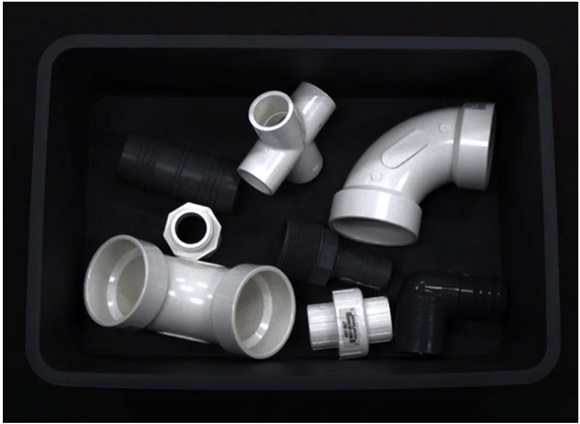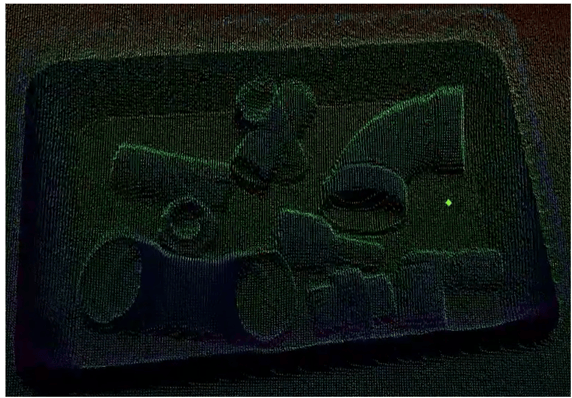3D Pattern Matching
Welcome back to Clearview Blog. In this series, we’ve introduced pattern matching, covered pattern matching with normalised greyscale correlation, and compared this with the edge-based, Geometric Model Finder approach.
This time we’ll be examining how pattern matching can be replicated in with image data obtained from 3D vision systems, and why 3D machine vision applications can benefit from creative solution-finding such as 3D matching.
3D Pattern Matching vs 2D Pattern Matching
As we’ve outlined so far, Geometric Model Finder (GMF) and Normalised Greyscale Correlation are effective tools for machine vision that use greyscale pixel values of a 2D image or pre-defined edges to find and match patterns in new 2D images.
But what happens when we want to do this with 3D imaging?
3D-based matching can provide ways of calculating precise locations of objects and their features within a 3D space, and can be utilised in machine vision systems to automate processes. This can include the handling of items, such as bin-picking, and particularly lends itself to robotic solutions as well.
What Problems Can 3D Matching Solve?
Unlocking the door to 3D matching means that many types of objects can be accurately recognised and found within three dimensions. Orientation is often the downfall of 2D matching, as changes here can result in an object displaying as a completely different polygonal shape, despite have an identical form.

Same object, different views.
More generally within the world, 3D Matching can radically evolve industrial processes by automating tasks that are typically menial and repetitive, and do not require extensive skills or training. Picking and placing, for example, is a task that could be given to a robot – with the application of 3D matching – freeing up the human worker to take on meaningful, skilled tasks.
Setting Up a 3D Pattern Matching System
Choosing a camera for 3D matching
Intrinsically, 3D imaging means relying on different ways of visualising image data, so instead of defining a model and comparing this with a 2D image and working with edge or pixel value data, we are working with point clouds. This means you will need a camera which produces 3D data. The type of 3D imaging approach you choose – stereo, time-of-flight, laser triangulation or structured light – will depend on the application.

2D image of a bin containing PVC pipe parts

Point cloud of the same PVC pipes and bin
In bin picking, for example, a time-of-flight camera, such as the Helios2 ToF from LUCID Vision Labs, would be best as it is a factory-tough, compact camera capable of sub-millimetre precision when employing a working distance of 1m or less.
Setting up the Helios2 for 3D Bin Picking
Time-of-flight can produce accurate depth information in real time, which makes it suitable to feed into a 3D matching algorithm, as well as supplying a robot arm with the necessary co-ordinates to pick and place safely.
Once you have selected a suitable 3D camera and calibrated it for your application, this needs to be paired with a 3D pattern matching tool, which will allow you to create 3D models and then find those models within a 3D space.
Future-Focused Machine Vision Solutions from Clearview
Thanks for reading this machine vision blog, we genuinely hope it has been useful for you.
We don’t just write blogs – we see further. Working with people in many different industries across the world, we combine proven machine vision expertise with industry leading components to devise intelligently-designed solutions for modern applications.
See what we can do for you today – get in touch.
While you’re here, be sure to check out our great range of machine vision cameras and machine vision software

Here at ClearView, we have a broad range of knowledge and machine vision expertise to help you decide on the right solution for your project.
We offer friendly expertise and a huge range of industry-standard quality machine vision components for printing and packaging, robotics, industrial automation, medicine, life sciences, and the automotive industry, just to name a few.
Our experts are happy to help no matter what your question or problem may be. Feel free to get in touch with us and one of our machine vision experts will be ready to help you get going with your project!







